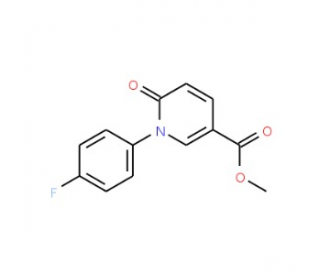详细说明
- Purity>90%, by SDS-PAGE visualized with Silver Staining and quantitative densitometry by Coomassie® Blue Staining.
- Endotoxin Level<0.01 EU per 1 μg of the protein by the LAL method.
- ActivityMeasured by its ability to inhibit proliferation of the A549 human lung carcinoma cells. The ED 50 for this effect is 40-120 ng/mL.
- SourceMouse myeloma cell line, NS0-derived
Mouse Semaphorin 3F
Ala19-Pro775 (Arg583Ala and Arg586Ala)
Accession # O88632IEGRMD Human IgG1
(Pro100-Lys330)N-terminus C-terminus - Accession #
- N-terminal Sequence
AnalysisAla19 - Structure / FormDisulfide-linked homodimer
- Predicted Molecular Mass111.6 kDa (monomer)
- SDS-PAGE110-122 kDa, reducing conditions
| 3237-S3 | | |
| Formulation Lyophilized from a 0.2 μm filtered solution in Citric Acid and NaCl. | ||
| Reconstitution Reconstitute at 100 μg/mL in sterile PBS. | ||
| Shipping The product is shipped with polar packs. Upon receipt, store it immediately at the temperature recommended below. | ||
| Stability & Storage: Use a manual defrost freezer and avoid repeated freeze-thaw cycles.
|
Semaphorin 3F (Sema 3F; previously Sema IV) is one of six Class 3 (secreted) semaphorins which in the mouse share 40 - 50% amino acid (aa) identity. Class 3 semaphorins are potent chemorepellents that function in axon guidance and/or vascular tip cell guidance during development (1). Sema 3F is expressed in the developing nervous system, especially in the dorsal spinal cord (2, 3). In adults, Sema 3F is expressed in the lung and most other tissues (2). Crystal structures of semaphorins reveal that the 500 aa N-terminal Sema domain forms a seven-blade beta -propeller similar to that found in integrin molecules. Fourteen conserved cysteine residues and one or more N-glycosylation sites are thought to be critical for forming the secondary structure (4). Isoform A is missing aa 153 - 183 within the Sema domain relative to the long form (isoform B) but appears to have similar activity. C-terminal to the Sema domain, Sema 3F has a basic domain, a cysteine-knot plexin/semaphorin/integrin (PSI) domain, an Ig-like domain, a cysteine for dimerization and another basic domain at the C-terminus. Dimerization and cleavage at the C-terminus are required for repulsing activity of class 3 semaphorins (5). Mouse Sema 3F shares 96%, 99%, 92%, 97% and 82% aa identity with human, rat, bovine, canine and chick Sema 3F, respectively. Type 3 semaphorins transduce signals through transmembrane plexins, either directly or by binding associated neuropilin receptors. Sema 3F signaling is transduced by type-A plexins, especially Plexin-A3, via interaction with neuropilin-2 (3, 6). Genetic disruption of either Sema 3F or neuropilin-2 alters motor axon trajectory to the ventral forelimb (3). Sema 3F is deleted or downregulated in many metastatic tumors. Restoration of Sema 3F decreases tumorigenicity, vascularization and adhesiveness, most likely through repulsive interactions, VEGF antagonism and downstream integrin regulation (7).
- References:
- Kruger, R.P. et al. (2005) Nature Rev. Mol. Cell Biol. 6:789.
- Eckhardt, F. and A. Meyerhans (1998) Neuroreport 9:3975.
- Huber, A.B et al. (2005) Neuron 48:949.
- Gherardi, E. et al. (2004) Curr. Opin. Struct. Biol. 14:669.
- Adams, R.H. et al. (1997) EMBO J. 16:6077.
- Yaron, A. et al. (2005) Neuron 45:513.
- Chedotal, A. et al. (2005) Cell Death Differ. 12:1044.
- Entrez Gene IDs:6405 (Human); 20350 (Mouse); 315996 (Rat)
- Alternate Names:sema domain, immunoglobulin domain (Ig), short basic domain, secreted, (semaphorin) 3F; sema domain, immunoglobulin domain (Ig), short basic domain, secreted, 3F; sema III/F; sema IV; Sema3F; SEMA4; SEMA-IV; SEMAK; Semaphorin 3F; semaphorin III/F; semaphorin IV












